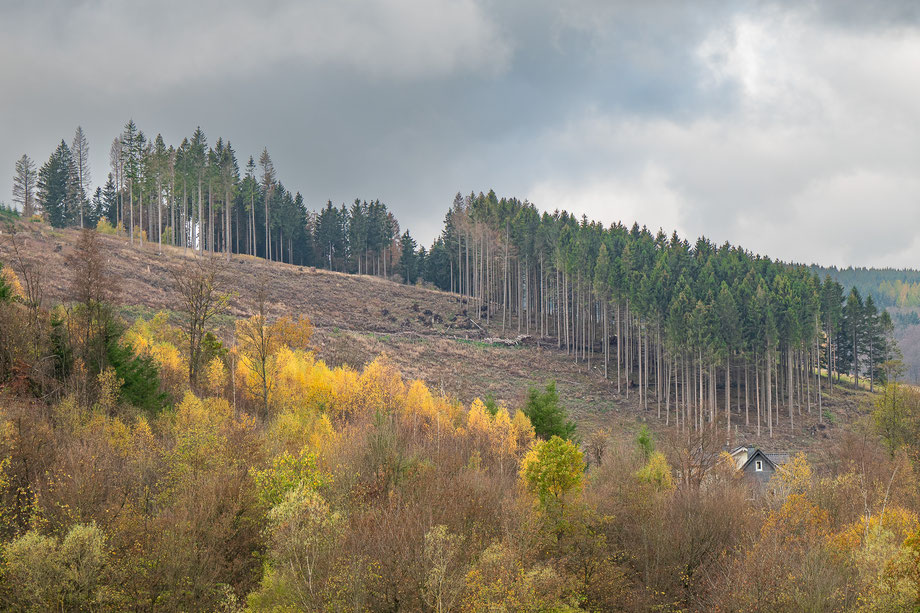German forests have come to a turning point. The dry summers of the last years initiated a development that strongly weakened the forests across the country. Trees are missing water which makes them vulnerable to storms, fires and vermins. This is especially valid for monocultures consisting of common spruces or pines only.
Such trees have been the cash cows of German forestry for many years. Wondering why I use an economic term to describe an ecological development? Well, many scientists argue that the economic use of the wood might be the root cause for the forests struggeling with climate change. The dead of the forests mainly concern trees that are planted by humans at places they do not naturally belong. Spruces and pines are fastly growing species and their wood was a well demanded raw material after World War II. It was used as timber but also to pay reparations to the Allies.
How monocultures struggle with climate change
But with temperatures rising, the stress level of the trees are rising, too. Since 2018, Germany has lost about 740.000 acres of forest. The shallow roots of the spruces cannot save enough water throughout periods of drought which strongly weakens a tree's power of resistance.
The influence of bark beetles on monocultures
Vermins such as bark beetles face almost no resistance when affecting a tree and in monocultures the next "victim" is just around the corner. At this point it is to say that bark beetles - as every species - indeed serve a meaningful purpose for the dynamic and vitality of a forest. It is their task to selectively attack sick trees and start its degradation process so that they quickly make room for younger and healthier trees. Adult beetles bore into the bark of a tree to lay their eggs in its inner layer. When the eggs hatch, the larvae eat the inner layer and continue tunneling inward where they cut off nutrients.
Reforestation as solution?
As a consequence, a lot of trees need to be cut because the damage done by drought, storms and vermins are just too high. Attempts to plant new trees and restore the forests often fail because young trees need even more water to grow. With more heat waves and drought periods to expect, they hardly have any chance to survive.
If forestry cannot be the solution because it's considered to be part of the problem, what other options are there? Some forest owners follow an unconventional approach and try to rewild their land. That means that they do not consider the bark beetle's work as damage. They do not cut or collect dead wood but just leave it where it is, so it can supply the soil with nutrients and thereby support the growth of new plants and trees. The import of trees that are better resistent to drought might be another option. Some genetic engineers even experiment with altering the tree's DNA to make them more resilient.











Write a comment